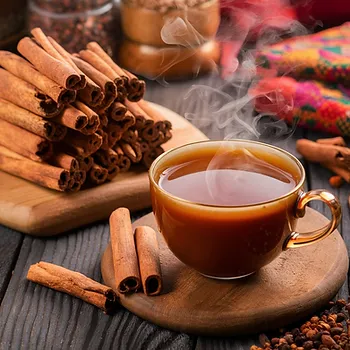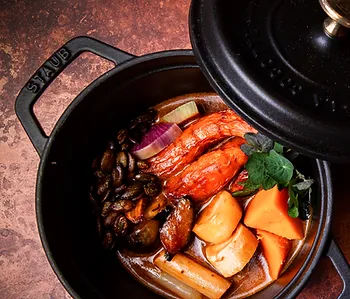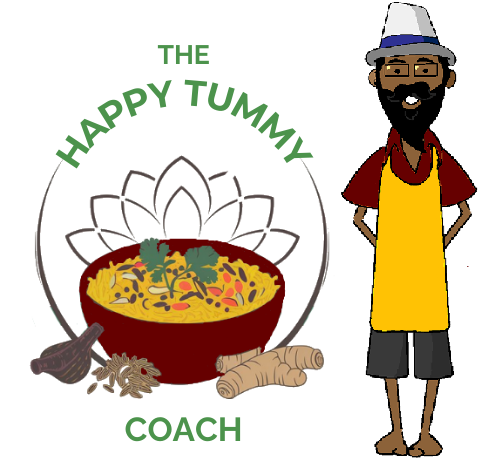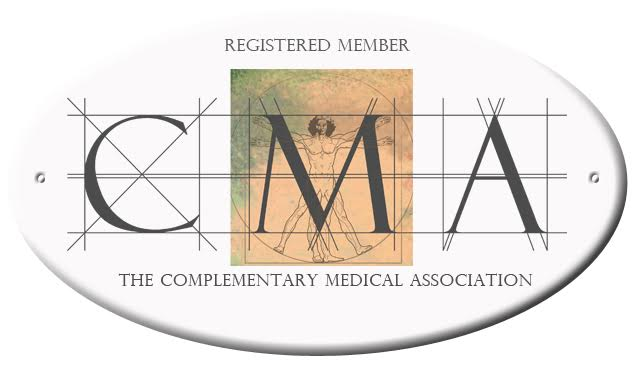Introduction:
Did you know that cinnamon, prized for its sweet aroma and spicy flavor, was once considered more valuable than gold? Cinnamon is a versatile spice with a rich history in traditional medicine and culinary practices, making it a staple in kitchens and remedies worldwide. Today we unravel the wealth of health benefits and wellness properties of cinnamon in everyday life. . . .

Historical Significance of Cinnamon:
Cinnamon’s origins trace back to ancient India, Greece, Egypt, Rome, and China, where it held cultural significance and was revered for both its exotic flavor and potential health benefits. In Ayurveda, true cinnamon, known as Ceylon cinnamon (Cinnamomum verum) from Sri Lanka, is highly valued for its warming properties and therapeutic effects. The cinnamon used in ancient Greece, Egypt, Rome, and China was often Cassia cinnamon (Cinnamomum cassia), which has a stronger, more pungent flavor but differs in its medicinal qualities.
In Western societies, Cassia cinnamon (Cinnamomum cassia) is the most commonly found variety in retail stores, bakeries, and as an ingredient in various foods. It is often labeled simply as “cinnamon” and is preferred for its stronger, more pungent flavor and lower cost compared to Ceylon cinnamon (Cinnamomum verum). So to find True Cinnamon, one needs to visit an Indian spice and groceries store.
Cassia cinnamon does carry a safety precaution. It has a higher risk of liver damage and other side effects due to its high coumarin content when consumed in large quantities.
True cinnamon from India and Sri Lanka has a low coumarin content and is considered safe for long-term use.
This blog post specifically talks about True Cinnamon and not Cassia Cinnaomon
Nutritional Profile of Cinnamon:
Beyond taste and aroma, cinnamon boasts a remarkable nutritional profile packed with essential nutrients and bioactive compounds. It contains significant amounts of antioxidants, such as polyphenols and flavonoids. Additionally, cinnamon is a good source of manganese, calcium, and fiber, further enhancing its nutritional value. Incorporating cinnamon into daily meals and drinks can provide a flavorful boost while offering a range of health benefits.
Medicinal Properties of Cinnamon:
Cinnamon’s potent medicinal properties is attributed to its active compounds, including cinnamaldehyde and cinnamic acid. These compounds exhibit anti-inflammatory, antioxidant, and antimicrobial effects, making cinnamon a valuable ally in promoting health and vitality. Research suggests that cinnamon may help regulate blood sugar levels, improve heart health, and enhance cognitive function. Its versatility allows for various practical applications in managing common health issues and supporting overall well-being.
Ayurvedic Uses of Cinnamon:
In Ayurveda, cinnamon is revered for its ability to balance the body’s doshas and promote overall wellness. It is often incorporated into Ayurvedic formulations and remedies to support digestion, circulation, and respiratory health. Cinnamon’s warming properties make it particularly beneficial during the colder months, helping to pacify Vata dosha and alleviate cold-related ailments. By embracing Ayurvedic principles, one can harness the holistic benefits of cinnamon for optimal health and vitality.
Modern Scientific Research on Cinnamon:
Recent scientific studies indicate that cinnamon may have therapeutic potential in managing conditions such as diabetes, cardiovascular disease, and neurodegenerative disorders. Ongoing studies continue to explore cinnamon’s mechanisms of action and its role in promoting overall well-being, offering promising prospects for future health interventions.
Culinary Uses of Cinnamon at Home:
Cinnamon’s warm, sweet and inviting flavor allows a wide variety of uses in the kitchen, from comforting desserts, breakfasts, savory dishes and warm drinks. Whether sprinkled on your morning oats, stirred into coffee or tea, used in your homemade blend of chai, or infused into baked goods, cinnamon adds depth, complexity and healing. Explore the endless possibilities of cinnamon in your kitchen and enjoy the sweet and spicy nuances it brings to your day.
Harnessing the Benefits of Cinnamon in Daily Life
1. Cinnamon in Drinks:

Start your day by adding a 1/4 teaspoon cinnamon to your morning coffee or tea for a flavor and nutritional kick, as well as added natural sweetness.
2. Cinnamon in Savory Dishes:
Add a pinky sized cinnamon stick, OR 1/4 to 1/2 teaspoon powder to soups, stews, casseroles, rice dishes and curries

3. Cinnamon in Desserts:

Start your day by adding a 1/4 teaspoon cinnamon to your morning coffee or tea for a flavor and nutritional kick, as well as added natural sweetness.
4.Cinnamon Facial Mask
Ingredients:
- 1 teaspoon of ground cinnamon
- 1 tablespoon of honey
- 1 tablespoon of plain yogurt

Directions:
- In a small bowl, combine cinnamon and yogurt thoroughly by mixing well.
- Add honey and blend the ingredients until you have a smooth and consistent paste. If you have a blender that is easy to get every drop out from, then you could use that.
- Wash face with warm water and your favourite unscented face soap. Pat dry and apply the rejuvenating facial mask evenly, avoiding the eye area.
- Leave the mask on for about 10-15 minutes to allow the beneficial properties to work, and for you to feel the rejuvenating effects on your skin.
- After 10-15 minutes rinse off the mask with lukewarm water and gently pat your skin dry with a clean, soft and absorbent towel.
- Follow up with your regular skincare routine, such as applying moisturizer, for hydrated and refreshed skin.
5. Cinnamon in Morning Oats:
Sprinkle 1/2 to 1 teaspoon of cinnamon powder over your oats breakfast before serving.
Conclusion:
From ancient Ayurvedic wisdom to modern scientific research, cinnamon continues to captivate. By incorporating cinnamon into your daily life, whether through kitchen creations or holistic remedies, you can tap into its rich heritage and embrace a life of wellness and vitality.
Share your experiences and questions in the comments section below!
With love,
Further Reading and References:
Healthline on Cinnamon: https://www.healthline.com/nutrition/10-proven-benefits-of-cinnamon
PubMed – Cinnamon: Potential Role in the Prevention of Insulin Resistance, Metabolic Syndrome, and Type 2 Diabetes: https://journals.sagepub.com/doi/10.1177/193229681000400324
Cinnamon: A Multifaceted Medicinal Plant: https://www.ncbi.nlm.nih.gov/pmc/articles/PMC4003790/
WebMD – Cinnamon: Uses and Benefits: https://www.webmd.com/vitamins/ai/ingredientmono-887/cinnamon
Revisiting an ancient spice with medicinal purposes: Cinnamon: https://www.sciencedirect.com/science/article/abs/pii/S0924224416304782
Stay tuned for the next post on the Dynamic Duo of Ginger and Garlic!





